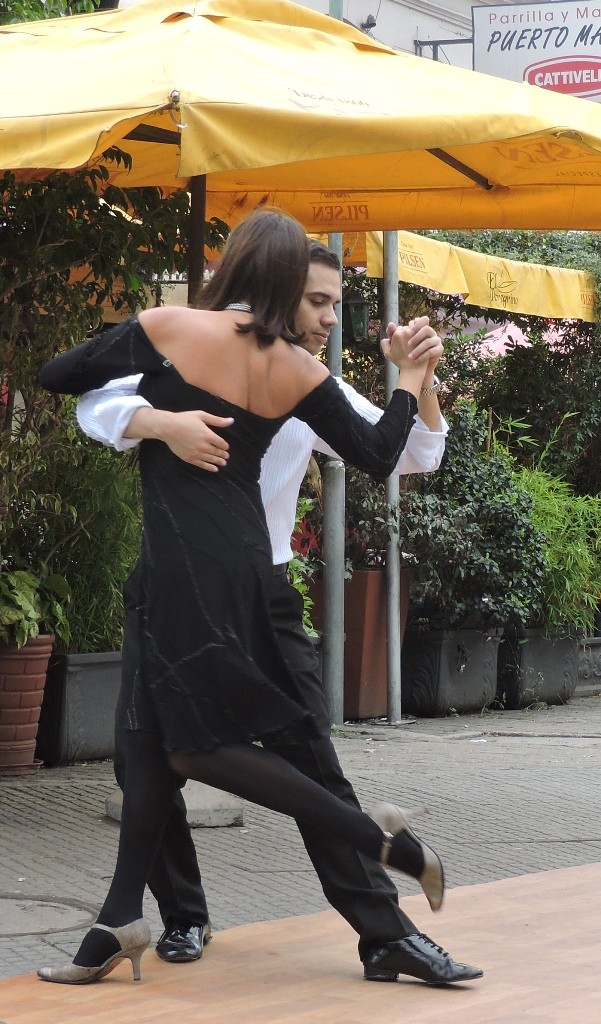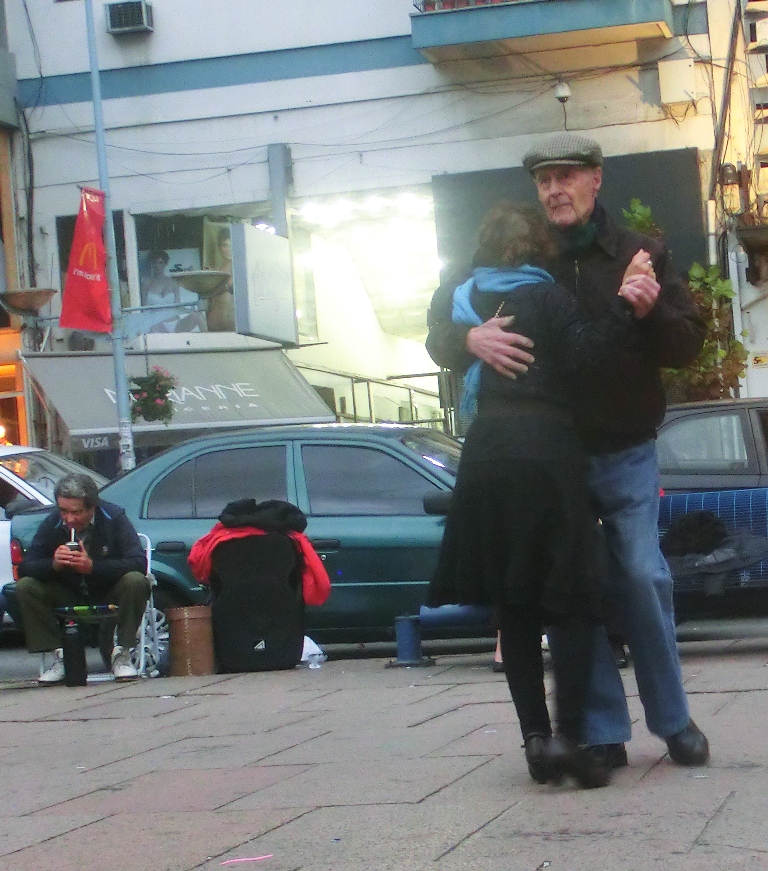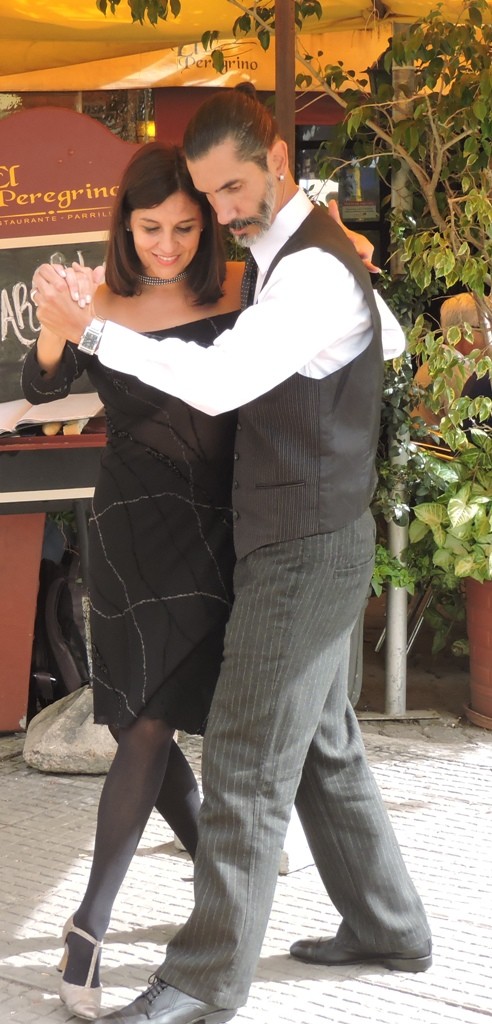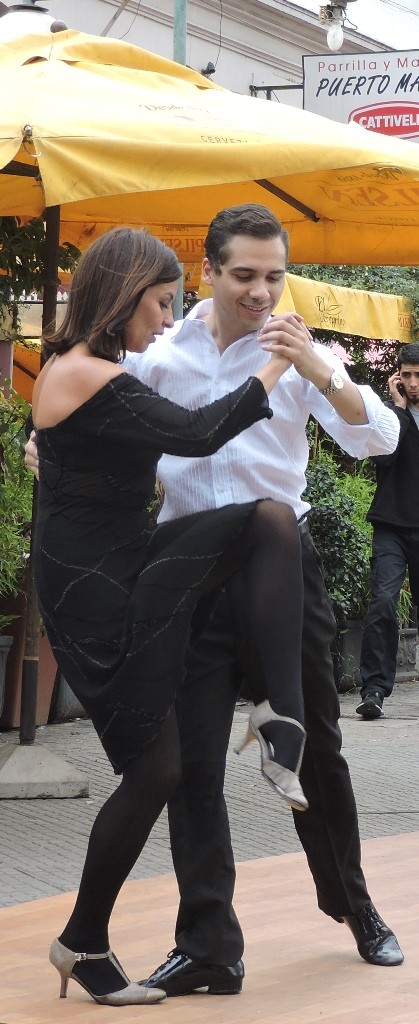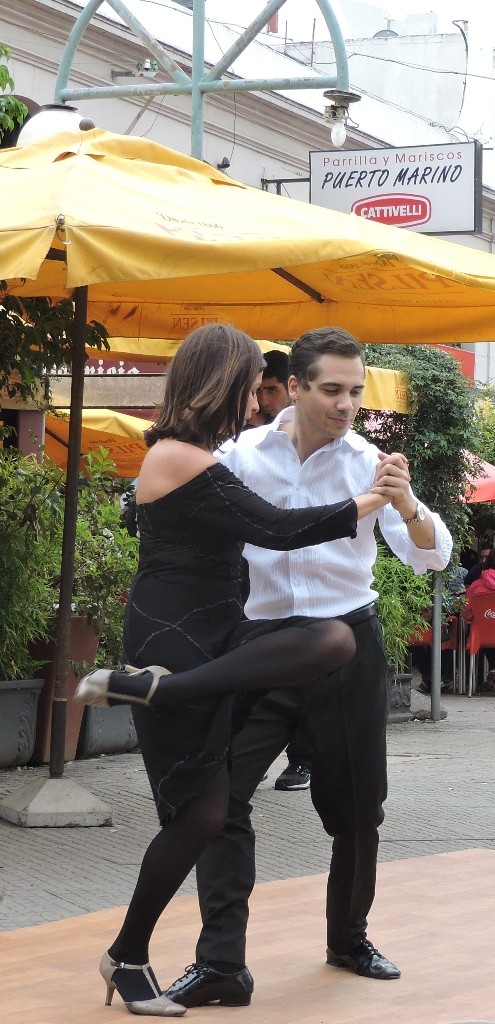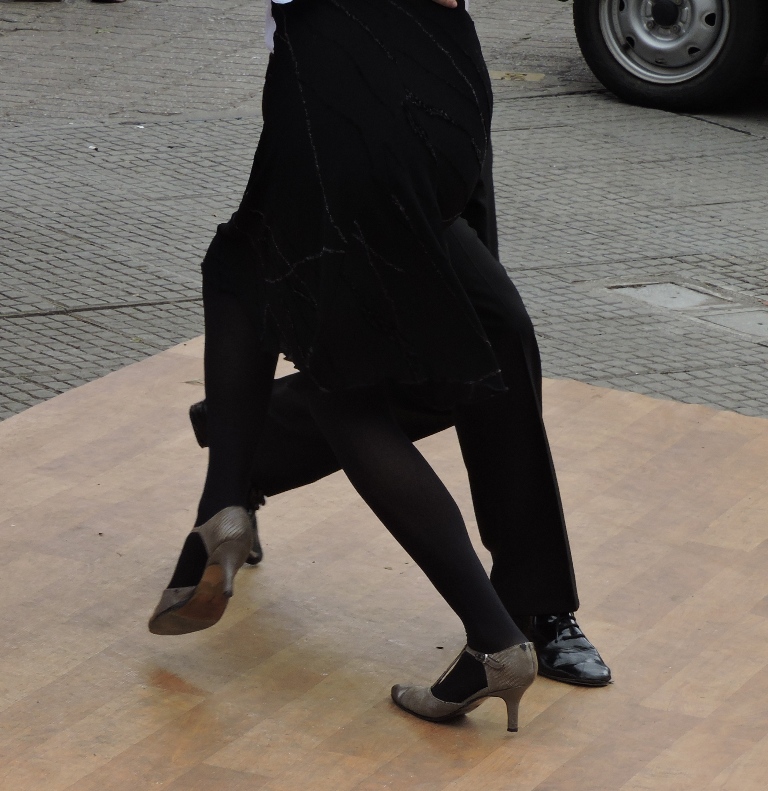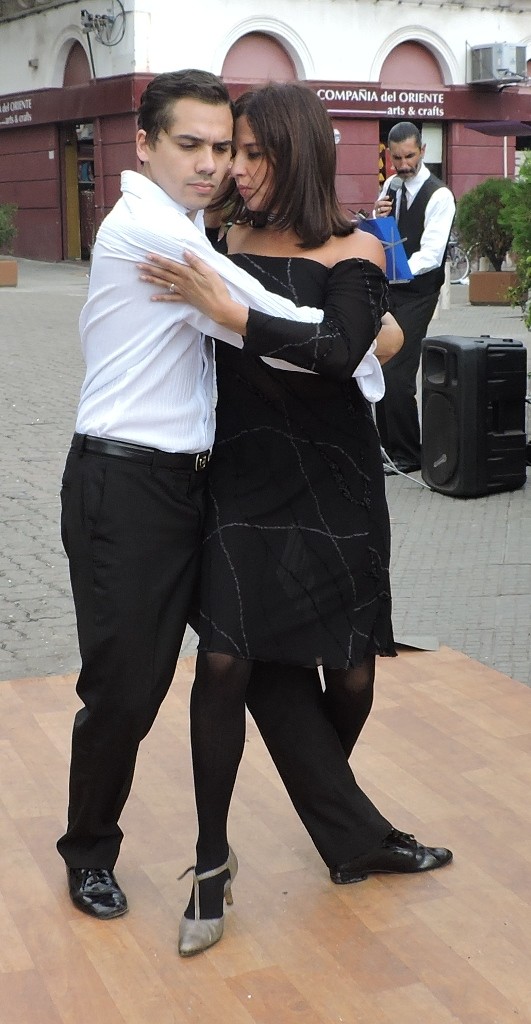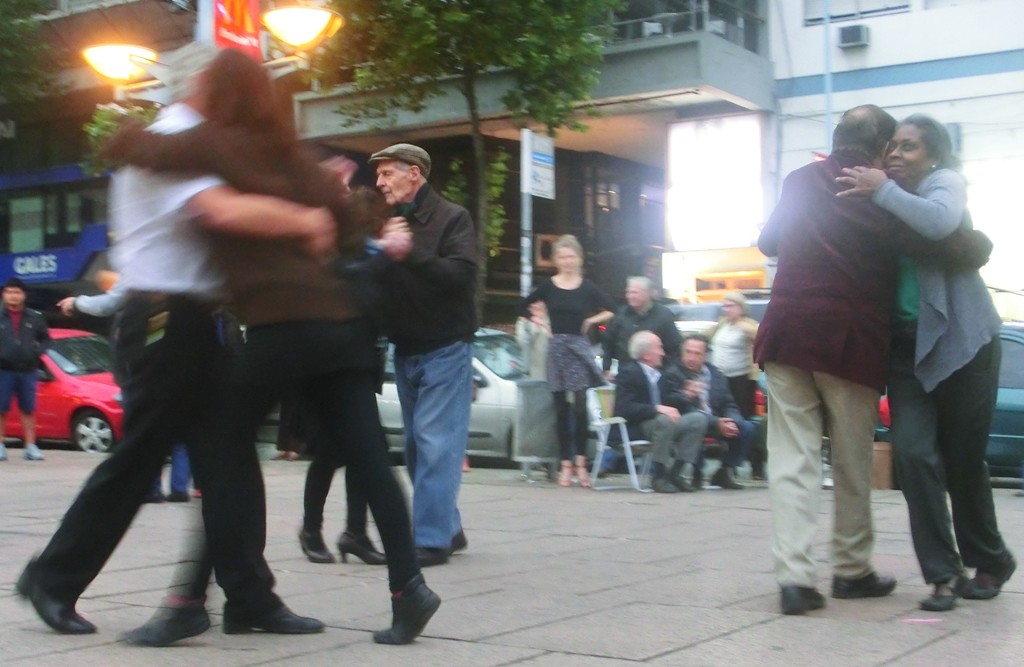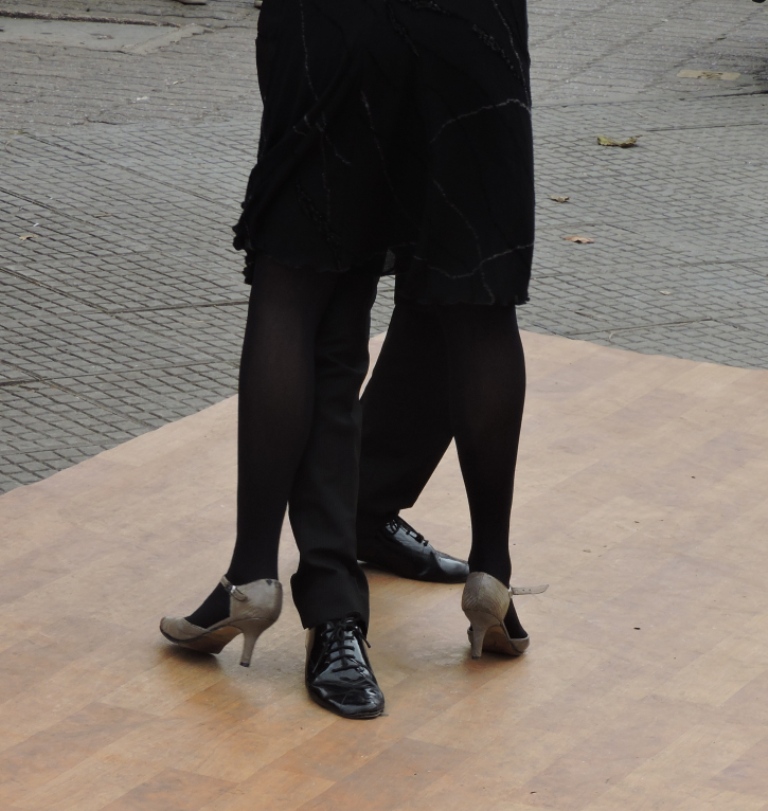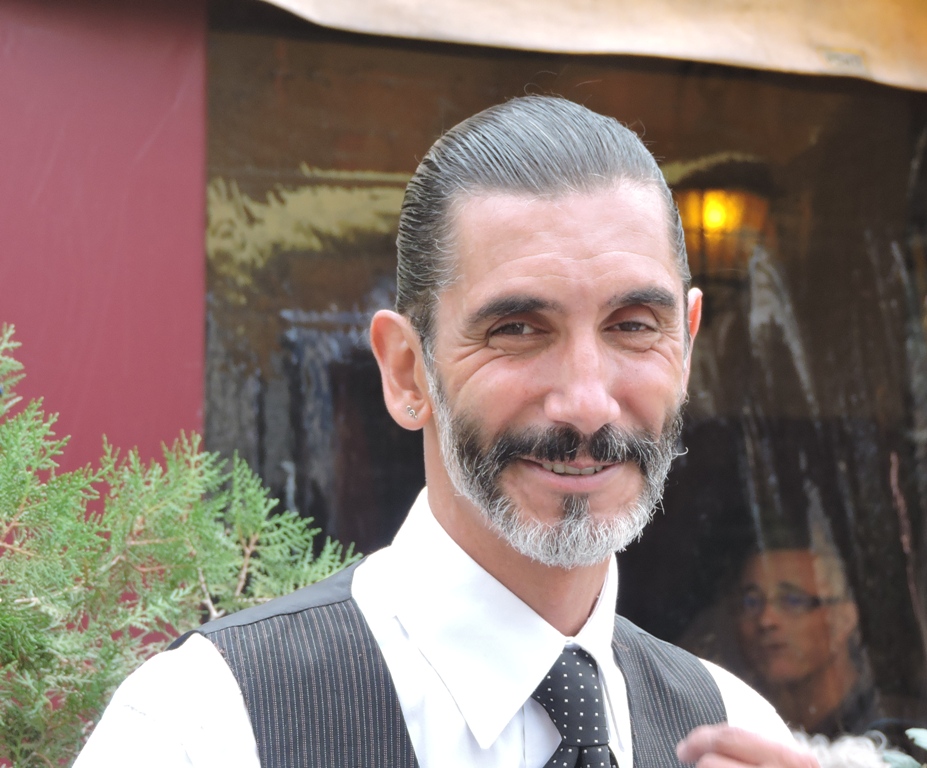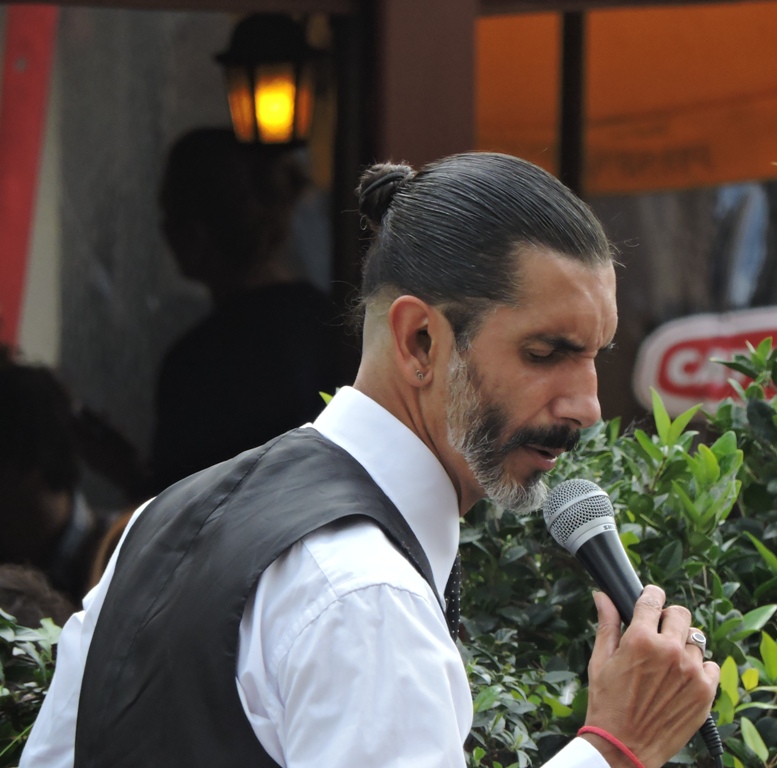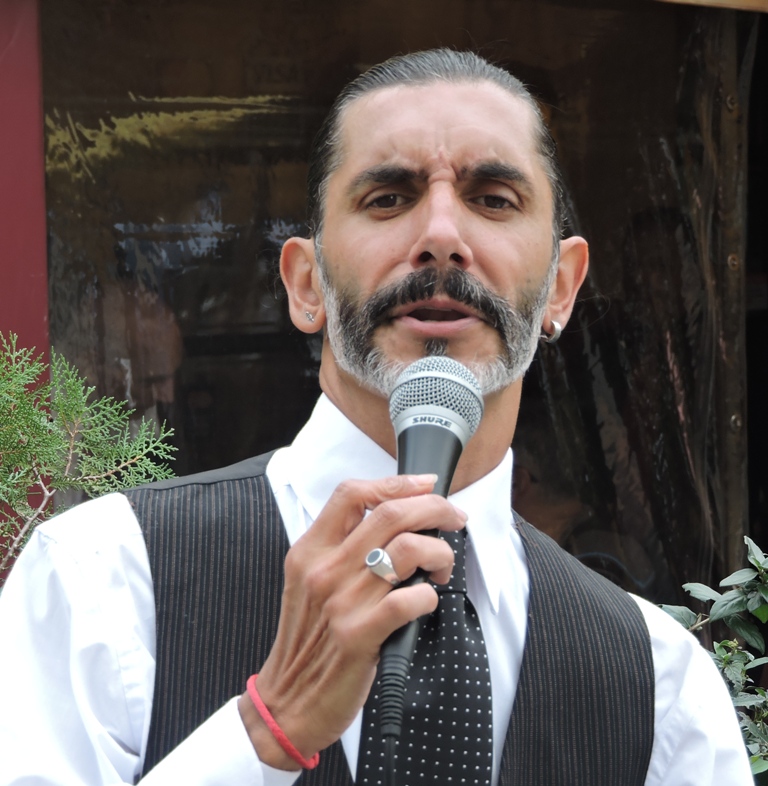Klaus Hart Brasilientexte
Aktuelle Berichte aus Brasilien – Politik, Kultur und Naturschutz
Paartanz – Diskothekenhopserei. Brasiliens Kolumnistin Danuza Leao, Schwester der großen Bossa-Nova-Sängerin Nara Leao.
http://arquivoetc.blogspot.com/2008/09/danuza-leo-uma-dana.html
FAZ UNS 25 ANOS que não entro numa discoteca, mas leio os jornais, tenho amigas jovens que me contam, vejo filmes, e sei que hoje as pessoas dançam praticamente sozinhas; elas rebolam, fazem movimentos eróticos, caras e bocas para seu parceiro, mas tudo de longe. Depois trocam de par e repetem os mesmos gestos, simulam a mesma sensualidade, exatamente como tinham feito antes, e animadíssimas.
Outro dia fui a festa meio careta, de pessoas mais maduras, digamos assim. Não havia nenhum jovem ou, se havia, foi logo embora. Fiquei sentada olhando. As pessoas se comportavam mais do que civilizadamente, até porque eram quase todas casadas -o que, aliás, não quer dizer nada. Não se percebia nenhum sinal de paquera, e todos guardavam, um do outro, a distância regulamentar.
Depois dos drinques foi servido o jantar, o cafezinho, licores, e aí entrou o DJ, tocando as músicas apropriadas para aquele tipo de público.
As músicas eram do tempo em que os bichos falavam, mas conhecidas dos presentes: „New York, New York“, „Strangers in the Night“, „My Way“, „Night and Day“, a maioria cantada por Frank Sinatra. As pessoas, todas com mais de 50, se animaram, e algumas foram para a pista de dança, que logo ficou cheia.
Fiquei prestando atenção.
Era raro ver um casal casado dançando junto, e fiquei pensando em como o comportamento muda. Hoje, com a total liberação sexual, os pares dançam separados; já os mais velhos, aqueles que eram jovens em 1970, continuam repetindo o que faziam, e que era muito normal.
Era assim: se numa festa um homem saísse com uma mulher que não a sua, fossem os dois para a varanda e lá ficassem conversando, esquecidos do mundo, seria quase um escândalo. Mas se tirasse essa mesma mulher para dançar, seria considerado absolutamente normal. Ora, para dançar, se encostavam as coxas, a barriga, os seios ficavam grudados ao tronco do homem, com apenas um leve tecido entre os corpos, e alguns mais ousados ainda arriscavam um „cheek to cheek“. Alguém ainda sabe o que é dançar „cheek to cheek“? É dançar com os rostos colados; e se conversava, com a boca quase dentro da orelha do parceiro, sobre o tempo não havia de ser. Eles dançavam, volteavam na pista agarrados, e se estivessem naquela posição -só que na horizontal, não na vertical-, por muito pouco estaríamos assistindo a um ato sexual. O mais curioso é que todo mundo achava normal; nenhuma mulher, nenhum homem nem sequer olhava para a pista de dança para ver o que estava acontecendo; afinal, estavam apenas dançando. Será que não tinham ciúmes?
Pense num casal dançando daquela maneira sem música: seria quase uma transa, mas perfeitamente permitida -como era, na época-, ninguém estaria nem aí.
Pois na festa foi como no passado.
Fico imaginando o que se passa nas discotecas modernas, e sei que ninguém dança assim, colado dos pés à cabeça. O sexo se banalizou a tal ponto que não se ouve mais falar de ninguém que tenha um grande desejo, a ponto de querer dançar colado, como em outros tempos. O barato da juventude de hoje é saber quantos beijos cada um conseguiu dar na noite anterior, a quantidade é que interessa.
Na festa a que eu fui, todos dançavam como no passado -talvez sem o mesmo entusiasmo-, mas igual, e vou declarar: se eu fosse homem, mulher minha não dançava com ninguém. E sendo mulher, homem meu também não. Ausriß.
Uruguay – Tango in Montevideo 2016. “Tanz als Selbstoffenbarung”. **
Ausriß, Daniel Machado, “Fotogaleria del Solis” 2016:”Bajo el cielo azul”.
http://www.danielmachado.com.uy/tango2010/
-http://guruguay.com/tango-dancing-uruguay/
“Tanz als Selbstoffenbarung”(Inzwischen ist die Paartanzkultur Brasilien stark abgestürzt, wurde unter der Lula-Rousseff-Regierung das Land enorm soziokulturell amerikanisiert):http://www.tango-ericandjeusa.ch/pdfs/NZZ.pdf
Eric und Jeusa – die Schweizer Adresse:http://www.tango-ericandjeusa.ch/
- DANIEL MACHADO
- Born in Montevideo.…….
- Trained in Architecture and infographic design at the Faculty of Architecture,University of the Republic and drawing and building at the Building School IEC.
- Trained in photography at Fotoclub Uruguayo (basic courses and workshops).
- GrisArt Photography School of Barcelona (professional lighting and art courses).
- He was assistant at Light Studio in Tokyo where he live.
- He has won different national and international awards, his photographs had been published in several information medias and are incluided in several private and public art collections in: Argentina, Brazil, Spain, USA, France, Japan, Holland, Italy, Luxembourg, New Zealand and Uruguay.
- ..
- SOLO & DUO EXHIBITIONS (selected)
- 2012
- -“TANGO: Moriyama Daido + Daniel Machado”. Traumaris Space Gallery. Tokyo, Japan.
- 2010
- -Miguelete JailHouse. TantoTempo Gallery. Kobe, Japan.
- ..
- 2009
- -A man Confined. Nikon Salon Ginza. Tokyo, Japan.
- ..
- 2008
- -Legs and Bandoneon. Espacio 10 Arte Gallery. Buenos Aires, Argentina.
- ……….
- 2007
- -Tango Con-fusion. Tabaris Gallery. Montevideo, Uruguay.
- ……..
- 2006
- -Arquigrafias. Arte x Arte Gallery. Buenos Aires, Argentina.
- ……
- 2005
- -The Rodelu Hospital” Municipal Center of Photography. Montevideo, Uruguay.
- -The Rodelu Project. Museum of the Republic. Rio de Janeiro, Brazil.
- -Legs and Bandoneon. Tabaris Gallery. Montevideo, Uruguay.
- ……
- 2004
- -The Rodelu Family. Goethe Institute. Montevideo, Uruguay.
- -Transarchitectures. USA – Uruguay Cultural Alliance. Montevideo, Uruguay.
- ……
- 2002
- -Transarchitectures. Architecture Faculty (U.de la R.). Montevideo, Uruguay.
- -Arquigrafias. Fotoclub Uruguayo Gallery. Montevideo, Uruguay.
- ……
- ……
- GROUP EXHIBITIONS (selected)
- 2014
- -“Tango Oriental: Three visions of Tango in Uruguay”. Korea Foundation. Seoul, Korea.
- 2013
- -“Tango Oriental: Three visions of Tango in Uruguay”. Capital Library. Beijing, China.
- -“Migrar es Cultura”. Museum of the Americas. Madrid. Spain.
- 2012
- -“Contemporary uruguayan artists” IDB Cultural Center. Washington DC. USA.
- -“Secretos de America“. Iberoamerican Finnish Institute. Madrid. Spain.
- 2011
- -“Tango Oriental: Three visions of Tango in Uruguay”. Cervantes Institute. Tokyo, Japan.
- -“Carnavalesque – wrestling with a mirror image created by others”. World Bank Art Program “About Change”, Washington D.C, USA
- 2009
- -Emotional Landscapes. Red Cultural del Mercosur. Itinerant South America.
- 2008
- -Dia a Dia. Galeria IILA VII Fotografia Festival Internazionale di Roma. Italy.
- -Descubrimientos. Complejo el Aguila. PhotoEspana08. Madrid. Spain.
- -Otras Miradas. Casa da Xuventud. Outono Fotografico 2008. Spain.
- -International Image Festival, Festimage08. Cine-Teatro Chavez Gallery. Portugal.
- .
- 2007
- -Selecciones ZoneZero, Siggraph-07. San Diego Convention Center. California, USA.
- -The photographers: Self-portraits V. Contemporary Center of Photography. La Plata, Argentina.
- ….
- 2006
- -2do. Latinoamerican Photography Festival Aella Foto-Latina. París, France.
- -Photo Imaging Expo 2006. Tokyo Big Sight. Tokyo, Japan.
- .……
- 2005
- -Tres x Uruguay. Kuntur Gallery. Amsterdam, Holland.
- -Realidad Social Latinoamericana. Cooperation Cultural Center. Buenos.Aires, Argentina.
- -5ta. Muestra Fotografias de América Latina. Municipal Museum of Albacete. Albacete, Spain.
- -Uruguayan Contemporary Photography. ABC ThreeHouse Gallery. Amsterdam, Holland.
- -Uruguayan Contemporary Photography. Cervantes Institute. Utrecht, Holland.
- -Uruguayan Contemporary Photography. Arte x Arte Gallery. Buenos Aires, Argentina.
- .……..
- 2004
- -1er. Latinoamerican Photography Festival Aella Foto-Latina. París, France.
- -4ta. muestra fotografias de américa latina. Municipal Museum of Albacete. Albacete, Spain.
- -Anónimos-sinónimos-antónimos. Recoleta Cultural Center. Buenos Aires, Argentina.
- -Arquitecturas Urbanas. Arco/2004. Centro municipal de las artes de Alcorcón. Madrid, Spain and Torrelavega National Center of Photography. Santander, Spain.
Montevideo unter den hochzivilisierten, islamisierungsfreien Großstädten der Erde – entsprechend touristisch attraktiv.
Tangosänger, Tangotänzer in Montevideo:
- .
Tango – Weltkulturerbe
Inscribed in 2009 (4.COM) on the Representative List of the Intangible Cultural Heritage of Humanity
The Argentinian and Uruguayan tradition of the Tango, now familiar around the world, was developed by the urban lower classes in Buenos Aires and Montevideo in the Rio de la Plata basin. Among this mix of European immigrants to the region, descendents of African slaves and the natives of the region known as ”criollos,” a wide range of customs, beliefs and rituals were merged and transformed into a distinctive cultural identity. As one of the most recognizable embodiments of that identity, the music, dance and poetry of tango both embodies and encourages diversity and cultural dialogue. It is practised in the traditional dance halls of Buenos Aires and Montevideo, spreading the spirit of its community across the globe even as it adapts to new environments and changing times. That community today includes musicians, professional and amateur dancers, choreographers, composers, songwriters, teachers of the art and the national living treasures who embody the culture of tango. Tango is also incorporated into celebrations of national heritage in Argentina and Uruguay, reflecting the widespread embrace of this popular urban music.
In neoliberalen, amerikanisierten Ländern wie Deutschland wird weder deutscher Volkstanz noch Tango an den Schulen gelehrt – von Ausnahmen abgesehen – Hinweis auf den von staatlicher Seite forcierten Kulturverlust. In Staaten wie Uruguay oder Kuba ist es dagegen bereits an den Schulen normal, Tango bzw. Salsa tanzen zu können.
Clärchens Ballhaus – wo man sich vor 1990 gut amüsieren konnte: http://www.faz.net/aktuell/gesellschaft/menschen/ballhaus-urgestein-im-gespraech-ick-mach-bis-ich-den-arsch-oben-hab-12567915.html
“Im Westen haben sie nur Scheiß erzählt über den Osten, als ob wir Untermenschen wären. Das hat sich immer noch nicht geändert.”
1990 endete vorhersehbar die große, jahrzehntelang aufregende Zeit des Tanzlokals – heute dominiert nur noch das übliche Berliner Banal-Programm.
Brasiliens bedrohte Paartanzkultur – Tanzkongreß 2014 in Sao Paulo. Samba, Forró, Zouk, Salsa, Tango – alle Fotos und Videos auf Facebook, anklicken…Einfluß der US-Kulturindustrie deutlich. “Semana da Cultura latina”. **
tags: brasilien-paartanzkultur 2014, forró, salsa, samba, semana da cultura latina, tango, tanzkongreß sao paulo, zouk
Alle Fotos, Videos auf Facebook, anklicken:
https://www.facebook.com/semanadaculturalatina
Exzellente Tanzkurse, exzellente Tanzlehrer – außergewöhnlich interessante Tanzaufführungen und Bälle – das Beste dieser Art aus ganz Brasilien. Üblicherweise haben mitteleuropäische Medien an derartigen Höhepunkten brasilianischen Kulturlebens keinerlei Interesse.
Ausländische Kongreßbesucher, darunter aus Deutschland, nutzten die ausgezeichnete Möglichkeit, ihre Tanzkenntnisse zu verbessern. Das Interesse von Mitgliedern der deutschen Gemeinde in Brasilien an landestypischem Paartanz ist extrem gering.
http://www.hart-brasilientexte.de/2013/10/21/brasilien-und-samba/
Auffällig ist die weiter wachsende Popularität des Kuba-Salsa – aus einem Karibikstaat mit etwa soviel Einwohnern wie Rio de Janeiro. Während es Argentinien, Kuba mit beträchtlichem Erfolg gelungen ist, eigene Musik-und Tanzkultur zu exportieren, scheiterte die im Falle Brasiliens an soziokulturellen Faktoren, Ineffizienz, Desorganisation, fehlendem politischen Willen der zuständigen politischen Verantwortlichen. Diese indessen sorgen dafür, daß niedrigwertiger US-Pop von der nordamerikanischen Kulturindustrie problemlos nach Brasilien durchgeschaltet wird, dort dominiert. Gleiches gilt für neoliberale Länder wie Deutschland – siehe den Einfluß der US-Kulturindustrie auf die Musikauswahl deutscher Sender.
Selbst auf einem brasilianischen Tanzkongreß wie in Sao Paulo wird daher von interessierter Seite versucht, brasilianische Rhythmen und Tänze mit Techno, Rap, Baile-Funk-Musik zu verwässern, mischen entsprechend orientierte Tanzprofis diese Musik allen Ernstes in Samba oder Forró. Begleitmusik eines solchen Events ist in Pausen, vor Aufführungen nicht zufällig billigster US-Pop.
Brasiliens große Zeitungen haben über den Tanzkongreß erwartungsgemäß nicht berichtet.
Der Umfang des Kulturexports aus einem Riesenland wie Brasilien spricht Bände – nur 0,2 % vom Weltvolumen: http://www.hart-brasilientexte.de/2010/12/22/brasiliens-kulturexport-nur-02-prozent-vom-weltvolumen-retrato-de-um-pais-que-nao-exporta-sua-cultura-o-estado-de-sao-paulo-brasilianische-musik-verkauft-sich-garnicht-so-gut-im-ausland/
http://www.hart-brasilientexte.de/tag/brasilien-kultur-und-gesellschaft-sammelbandtexte/
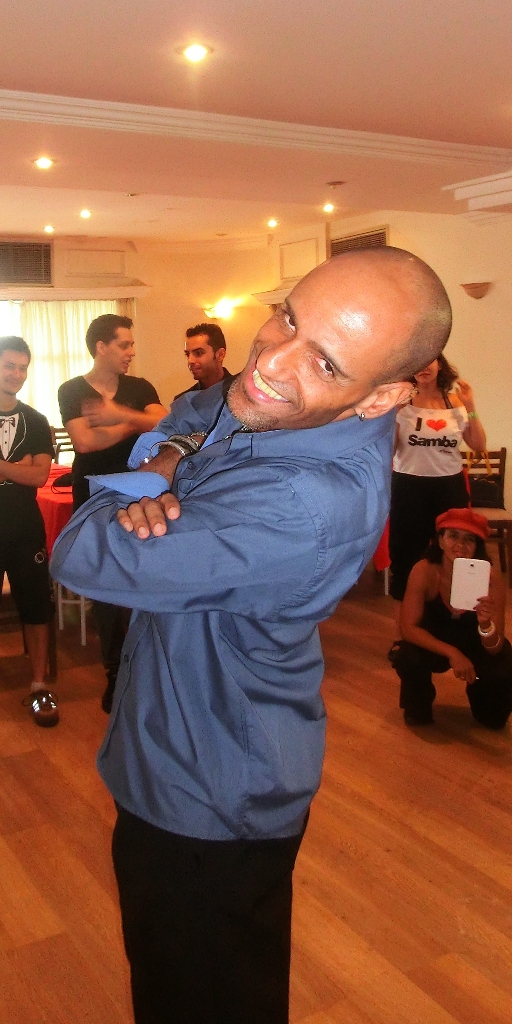
Charmanter Tanzlehrer Marcos Brilho.
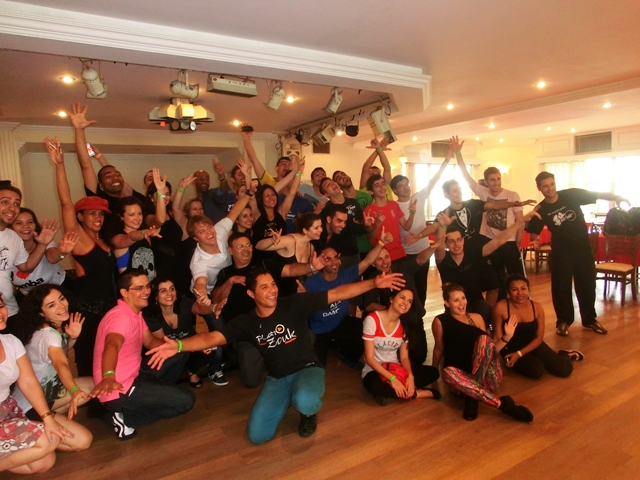
http://www.semanadaculturalatina.com.br/
Alle Fotos, Videos auf Facebook, anklicken:
https://www.facebook.com/semanadaculturalatina
https://www.youtube.com/user/semanaculturalatina/feed

Tanzlehrer Patrick Carvalho.

Kuba-Salsa in Sao Paulo.
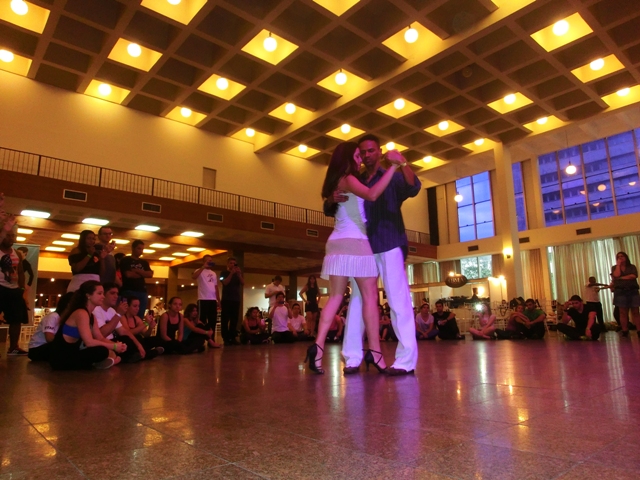
Samba-Cancao – Tanzlehrer Joao Carlos Ramos
http://joaocarlosramos.blogspot.com.br/2011/03/joao-carlos-ramos.html
”JOÃO CARLOS RAMOS
Dançarino e coreógrafo carioca, começou a dançar nos concursos das “Discos” dos clubes do subúrbio do Rio de Janeiro, organizando grupos amadores de dança de sua região.
Aos 19 anos ingressou no “Grupo Coringa Dança” da coreógrafa Graciela Figueroa dedicando-se ao estudo da dança contemporânea. Diversificou seu trabalho em diversas áreas realizando coreografias para teatro e musicais no Brasil, como “Brasil Brasileiro” de Claudio Segóvia, “ARN” – Intrépida Trupe (RJ), shows e vídeo-clipes de Jorge Benjor, Lulu Santos, Zeca Pagodinho e Paulo Moura.
Trabalhos no exterior no Ano Brasil\França – Carreau du temple em Paris, In-Transit – Haus der Kulturen der Welt em Berlin, Summer Dance Festival – Lincon Center Square em Nova Yorque e Printemps de Commediens em Montpellier.”
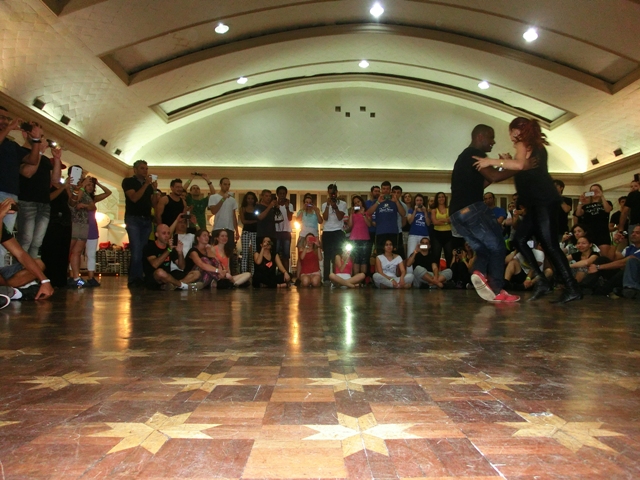
http://www.hart-brasilientexte.de/2008/07/29/warum-es-mit-brasiliens-erotischem-sex-bergab-geht-ganz-zu-schweigen-vom-rest-der-welt-stephen-kanitz-nennt-einen-wichtigen-aspekt-die-stupide-abschaffung-des-sinnlichen-paartanzes/
Jaime Aroxa – wie jedes Jahr Tanzlehrer und Mitorganisator des Tanzkongresses: http://www.hart-brasilientexte.de/2009/09/20/jaime-aroxa-gesichter-brasiliens/
http://www.ila-web.de/brasilientexte/aroxatropical.htm
http://www.hart-brasilientexte.de/2010/05/20/zouk-festival-in-berlin-kaum-zu-fassen/
http://www.hart-brasilientexte.de/2013/10/21/brasilien-und-samba/
Jaime Aroxa aus Rio de Janeiro, und besonders Zouk-Experte Philip Miha aus Sao Paulo haben den Zouk durch viele neue Schrittkombinationen stark bereichert, diese u.a. durch Workshops auch in Europa bekannt gemacht. Zahlreiche Tanzlehrer in Europa lehren daher Schritte von Miha und Aroxa, den meisten Tanzbegeisterten ist das nicht bewußt. Kurios, daß diese brasilianischen Zouk-Schrittkombinationen inzwischen in Europa auch auf Salsa-Rhythmen getanzt werden.
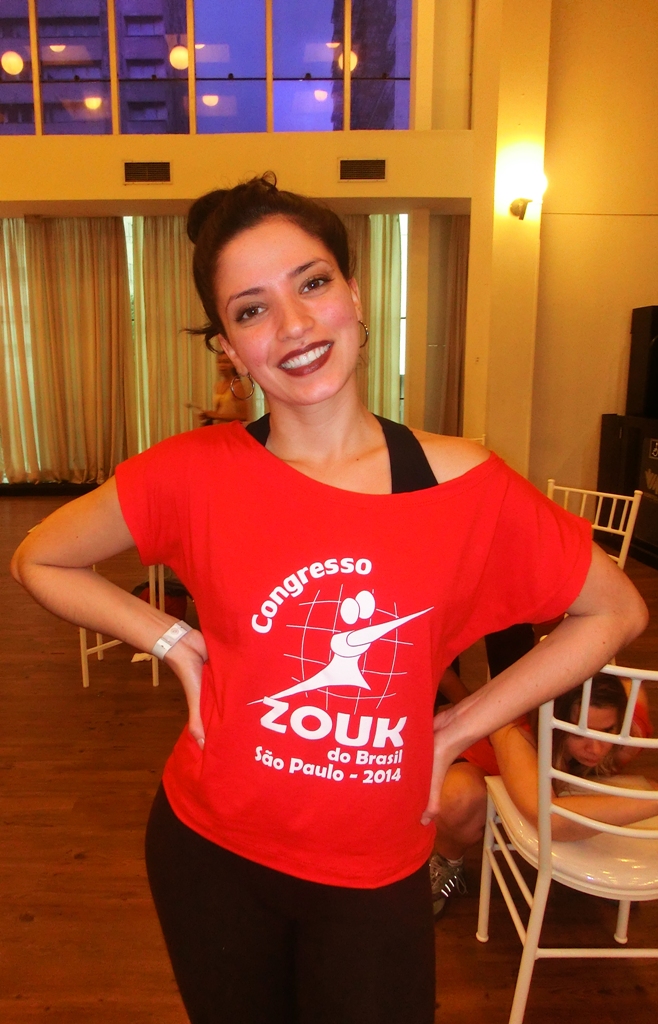
Der von den Autoritäten zum Schaden einheimischer Musik-und Tanzkultur geförderte, hochaggressive “Baile Funk” mit sexistischen Primitiv-Rhythmen, kopiert aus den USA – regelmäßig Schießereien mit Toten, Verletzten – auch am Wochenende des Tanzkongresses von Sao Paulo: http://g1.globo.com/rs/rio-grande-do-sul/noticia/2014/11/tiroteio-dentro-de-boate-com-baile-funk-deixa-feridos-em-porto-alegre.html
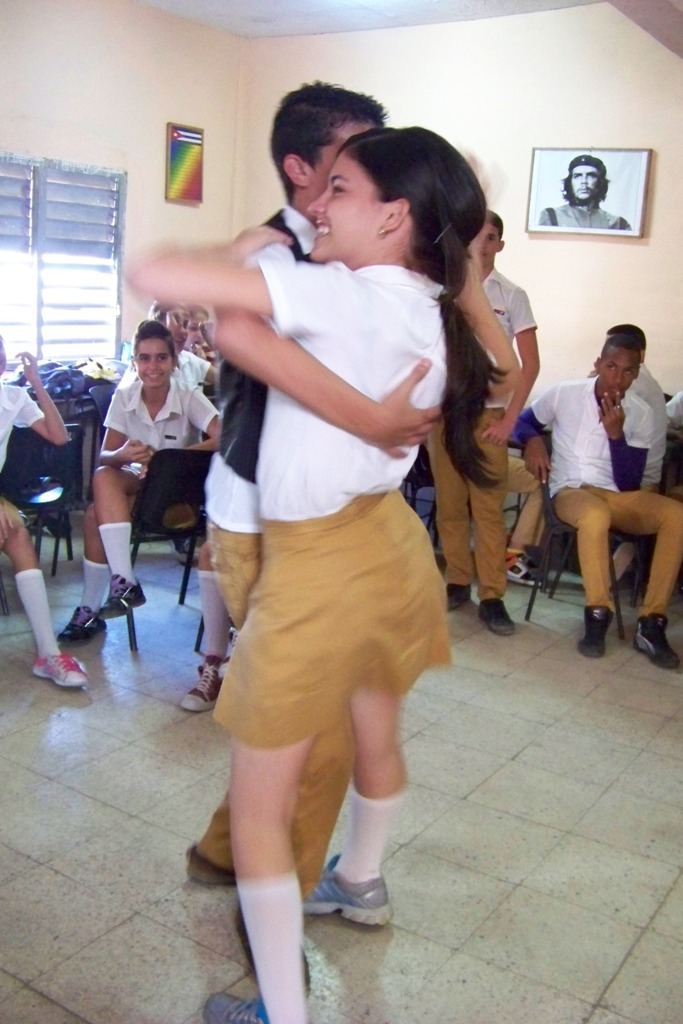
Auf Kuba tanzt der allergrößte Teil der Kinder und Jugendlichen bereits in der Schule, darunter in den Pausen, Salsa, beherrscht viele Schrittkombinationen sehr gut. In neoliberalen Ländern wie Deutschland wurde von interessierter Seite effizient dafür gesorgt, daß entsprechende lokale Kultur in eine Nische gedrängt wurde. Können deutsche Schüler eigentlich noch die Paartänze der deutschen Kultur?
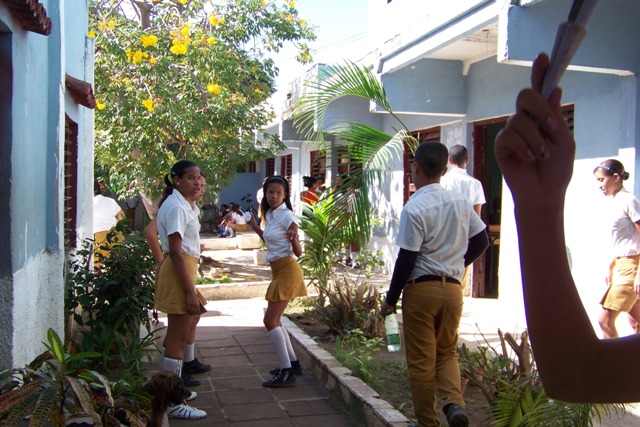
Aufforderung zum Tanz.
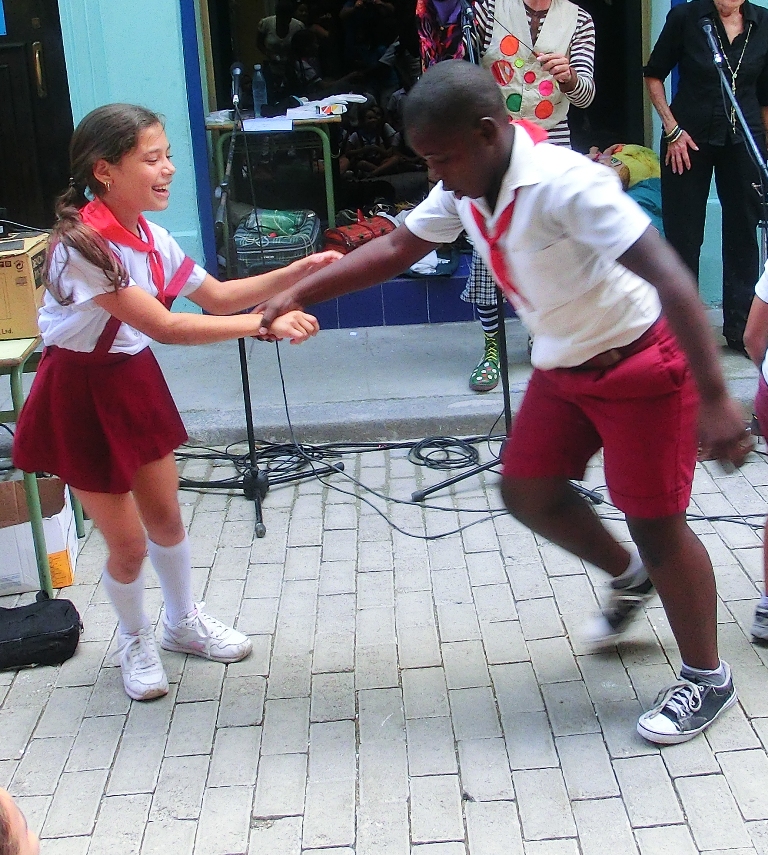
« Brasilien: „Sao Bento“ – vor dem Benediktinerkloster in der City Sao Paulos. – OSESP – our best. Das Wochenkonzert – sonnabends, sonntags im Radio der Mitschnitt. »
2 Kommentare
Noch keine Kommentare
Die Kommentarfunktion ist zur Zeit leider deaktiviert.
NEU: Fotoserie Gesichter Brasiliens
Links zum Thema Ukraine
Fotostrecken Wasserfälle Iguacu und Karneval 2008
interessante Links
Seiten
Ressorts
- Kultur (6.975)
- Naturschutz (1.101)
- Politik (12.729)
Suchen
RSS-Feeds
Verwaltung

